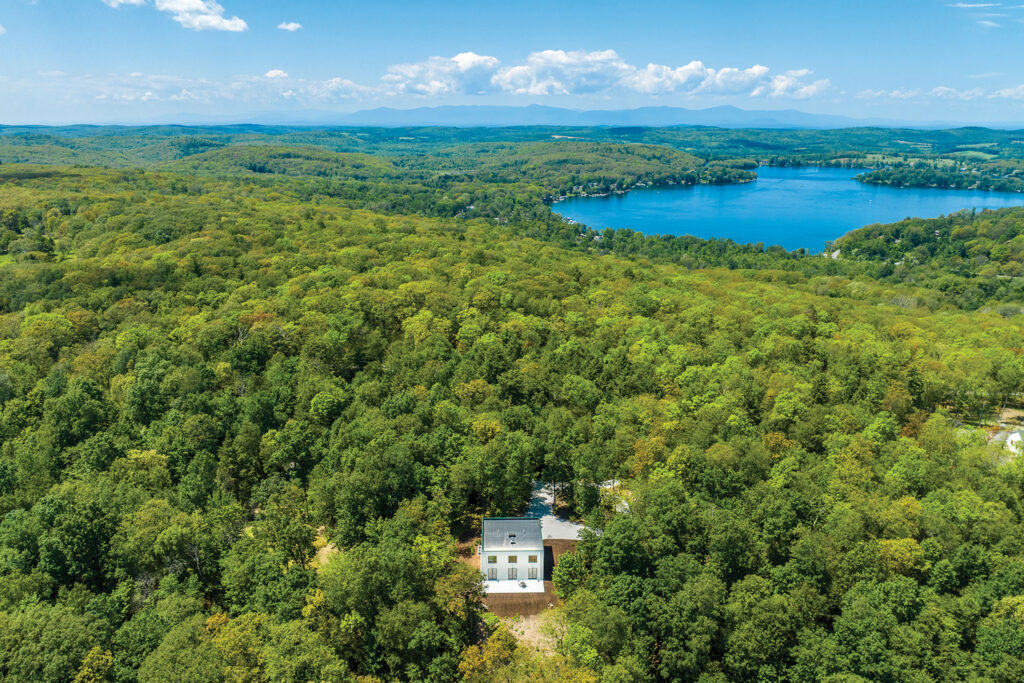As inventory begins to tick up, prices may actually drop.
By Bill Cary | Photography by Walker Esner
I keep thinking it’s been a decidedly sluggish real estate market so far this year. Indeed, the number of year-to-date closings in my home county of Ulster is down 23 percent compared to the same period in 2022 (923 vs. 1,201 in mid-October).
Similarly, in the mid-Hudson Valley market (Dutchess, Columbia, Greene and Ulster), closings are down 22 percent compared to last year (4,990 vs. 3,899 in mid-October).
But because inventory has been so low, prices have ticked up a bit. The year-to-date average sale price in Ulster this year is $501,000 compared to $474,000 in 2022.
“We’re seeing buyer fatigue,” says Tim Sweeney, broker/owner, Berkshire Hathaway Home Services Nutshell Realty in High Falls. “People are sick of losing out on properties.”
So what’s in store in 2024? How will the real estate market perform? I’m still skeptical, mainly because of interest rates and inventory shortages, but many agents are hopeful about a turnaround.
If you have 100 people coming to buy property in the Hudson Valley, only a handful of them want to be in the cities of Kingston, Hudson or Catskill. The typical buyer wants more land.
“I’m very optimistic,” says Elyse Harney Morris, broker/owner, Elyse Harney Real Estate in Salisbury, CT. Buyers are paying full price or perhaps four percent less than asking. She recently listed a $795,000 house in Lakeville on a Saturday and had a contract at full price the next day.
“After COVID, a lot of people moved up here full time and now they’re bringing their friends and family,” she says. “It’s really four seasons here—we’re not the Hamptons.” Before winter weather comes and snowy landscapes dampen a luxury home’s appeal, they’re photo-shooting 15 homes and prepping them now to go on the market in early 2024, Morris says. “We’ve never had that many.”
In Litchfield County, the “strong Connecticut towns are Salisbury/Sharon/Lakeville and Washington/Roxbury,” she says. “In Columbia, it’s Ancram, Ancramdale, Copake and Hillsdale while the Berkshires always remain strong.” Hudson continues to shine as well. I was there a couple of weeks ago for lunch, and I’m still amazed at the turnaround from the dark days of the 1980s and ’90s.
The current market in Hudson is “very, very healthy, a little slower than during the craziness of COVID, when people were buying houses over the phone,” says Jeb Hart, an agent with Corcoran Country Living who splits his time between homes in Chatham and Brooklyn. “It has calmed down. If a home is priced right, it will sell very, very quickly. There’s still a tremendous demand. Being close to Warren Street is always the goal, and close to the riverfront train station. I’d say the sweet spot is in the $800,000s. The average sales are in the $500,000s and there’s great inventory in the $700,000s.
It’s a very specific buyer for Hudson, says Raj Kumar, an agent with Four Seasons Sotheby’s International Realty. “If you have 100 people coming to buy property in the Hudson Valley, only a handful of them want to be in the cities of Kingston, Hudson or Catskill. The typical buyer wants more land. Hudson is like an urban environment in the middle of the countryside. I have 35 acres and horses and I’m six minutes outside of the city.”
Want some good news impacting 2024’s inventory? In some markets, more houses became available for sale toward the end of 2023. As of mid-October, there were about 400 properties on the market in Ulster, compared to the mid-200s last year, Sweeney says.
“As inventory starts to creep up, we could see a downturn in prices, which would bring back those fatigued buyers,” Sweeney says. For now, it’s still a sellers’ market.
Interest rates matter and there’s no immediate sign that they’re coming down. Let’s say you want to buy a $500,000 house, with $100,000 down. At 3 percent, your monthly payment would be $2,108; at 5 percent, $2,684; at 7 percent, $3,326, a whopping $1,218 more than your 3 percent bill.
“That takes people out of the market because they can’t qualify for a mortgage,” Sweeney says. Cash is still king, of course and most buyers in the $1 million plus range are all or mostly cash.”
As far as hot markets in Ulster, “Saugerties exploded, and the town of Rochester (Accord and Kerhonkson) has done exceptionally well,” Sweeney says.
So let’s put our crystal ball aside and take a wait-and-see approach to how the market will play out in this corner of the planet in 2024. As always, as we enter spring, more answers should be clearer regarding the state of real estate in our neighborhoods.












Comments are closed.